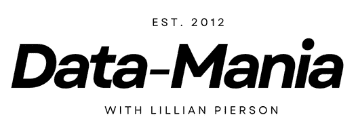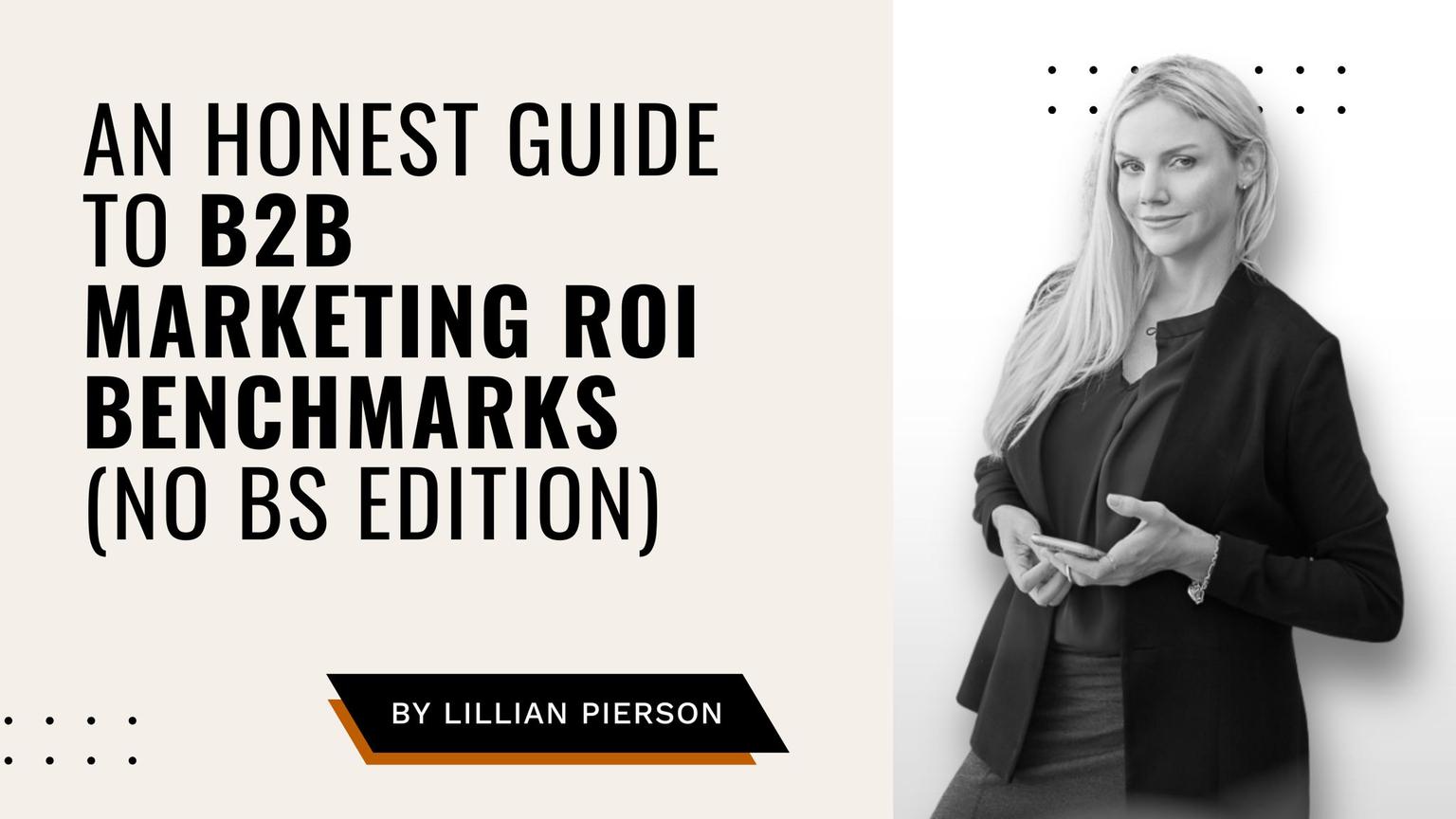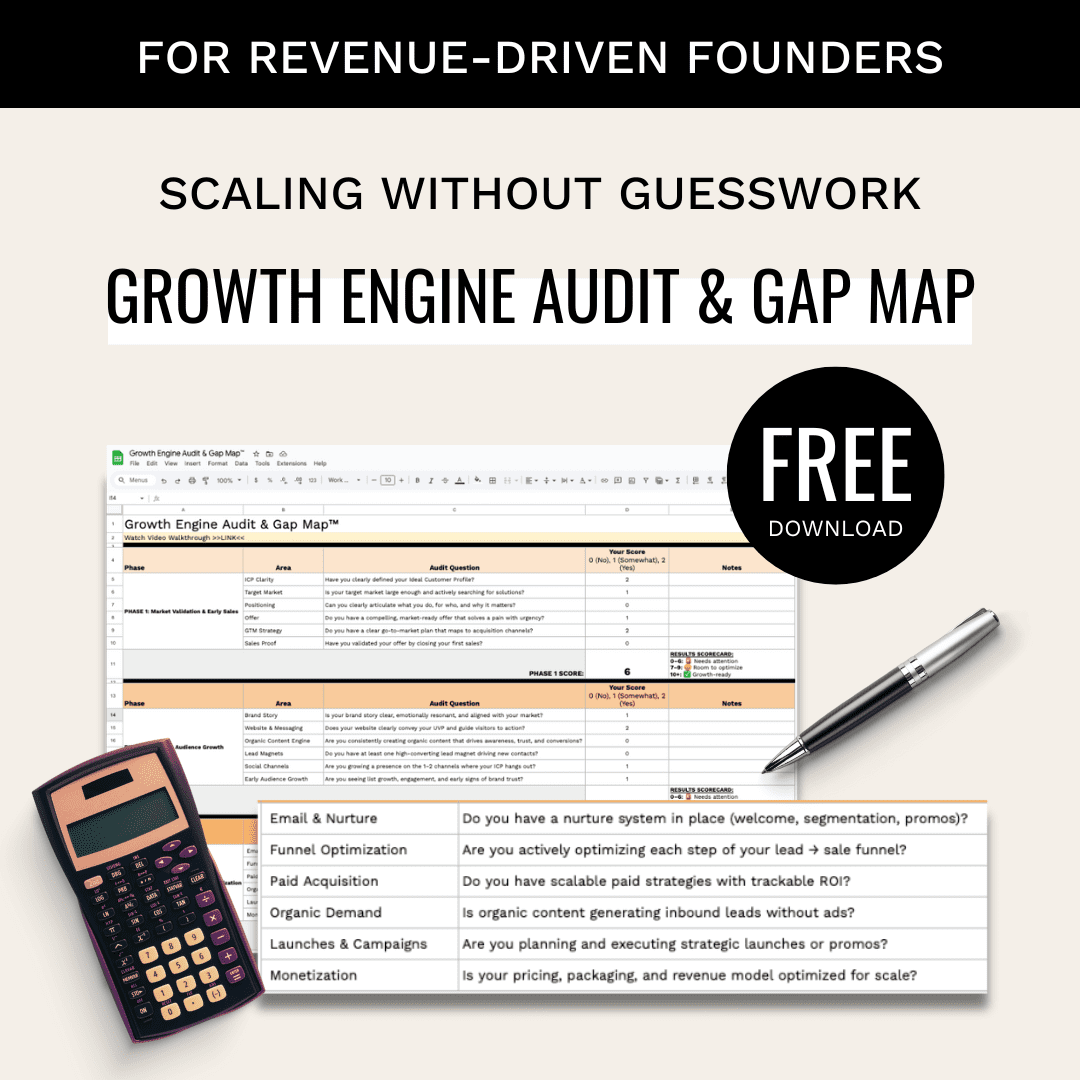If you’re leading a tech company in 2025, the pressure isn’t just on your marketing team, it’s also on you to prove every growth dollar extends runway and drives revenue. Here’s what you need to know about B2B marketing ROI benchmarks and how the smartest founders are allocating budgets right now.
I’ve spent years studying what really drives revenue in B2B marketing. Here’s what I’m seeing…
With capital scarce and growth targets high, founders can no longer afford blind marketing bets. The question isn’t if your spend works, it’s how soon it fuels pipeline and revenue.
Quick wins you need to know:
- Top ROI Performers: SEO leads with a 748% ROI, followed by email marketing at 261%, and webinars at 213%.
- Quick Wins: PPC campaigns deliver a 36% ROI but break even in just four months.
- Trends Shaping ROI: AI adoption, personalized experiences, mobile optimization, and video marketing are driving better results.
- Funnel Focus: Top-of-funnel efforts like SEO build awareness, while bottom-of-funnel strategies like free trials drive conversions.
My advice? Invest in data-driven tools, refine your B2B marketing ROI benchmarks over time, and find that sweet spot between short-term results and long-term growth. The goal isn’t just to maximize every marketing dollar – it’s to align your efforts with real business outcomes.
Unlocking B2B Marketing Insights according to Fedor Simic
2025 B2B Marketing ROI Benchmarks Overview
Let me be straight with you: understanding how your marketing stacks up against industry benchmarks is absolutely crucial for making smart budget calls. I’ve spent years looking at this data, and recent findings reveal some pretty significant differences in ROI across channels and sectors. These insights give us a much clearer picture of what’s actually driving success in today’s competitive environment.
Let’s dig into the real numbers so we’re working from solid ground, not just gut feelings.
Average ROI Across Industries
On average, B2B marketing delivers a 5:1 ROI, meaning companies earn $5 for every dollar spent [2]. That means for every dollar you invest, you’re getting five dollars back. Not bad, right?
But here’s where it gets interesting: this figure varies wildly depending on your marketing channel and industry.
Let me break down the B2B marketing ROI benchmarks that matter most:
- SEO remains a top performer, boasting a 748% ROI for B2B companies [5]. It typically breaks even in 9 months and achieves a 9.1 ROAS over three years [2].
- Email marketing provides a 261% ROI, with a break-even point of 7 months and a 3.5 ROAS [2]. B2B email campaigns average a 2.4% conversion rate, slightly trailing B2C campaigns at 2.8% [3].
- Webinars generate an average 213% ROI, with B2B SaaS companies seeing peaks of 430% ROI. This makes webinars especially effective for businesses offering complex solutions that benefit from in-depth, educational content [2].
- LinkedIn’s ROI varies by strategy: organic content delivers a 192% ROI, while paid campaigns achieve 229% ROI [2]. Notably, LinkedIn boasts a visitor-to-lead conversion rate of 2.74%, outpacing Twitter (0.69%) and Facebook (0.77%) [2].
- PPC campaigns offer a more modest 36% ROI, but with a quick break-even period of 4 months. This makes them appealing for businesses seeking faster results [2].
"Think of industry benchmarks as a reference point. Every business has unique dynamics – its audience, goals and challenges. The key is to use industry data as a baseline, then refine your benchmarks to reflect your own performance and priorities."
- Meg Cintorino, VP of Marketing, Head of Strategy & Delivery, Conveyor Marketing Group [1]
These B2B marketing ROI benchmarks give us a foundation for exploring how individual channels perform in greater detail. But before we dive into specific channels, let’s look at the broader trends shaping ROI in 2025.
Key ROI Trends in 2025
Beyond just the numbers, there are some fascinating trends reshaping how we measure and achieve ROI. Understanding these trends is crucial for setting realistic B2B marketing ROI targets for your own organization.
- AI is gaining serious momentum: Nearly 47% of marketers plan to expand AI use in their strategies [4]. AI is primarily being used for audience segmentation, personalized content, and optimizing campaigns.
- Personalization drives results: About 80% of business buyers are more likely to purchase from companies offering tailored experiences. Account-Based Marketing (ABM) is a standout strategy, favored by 41% of B2B marketers [4].
- Mobile optimization is critical: With mobile accounting for nearly 48% of B2B ad spend in 2023, it’s projected to surpass 50% by 2025 [4]. Businesses without mobile-friendly campaigns are likely seeing diminished ROI.
- Video marketing is on the rise: A whopping 87% of B2B marketers plan to invest in video in 2025 [4]. Video’s ability to engage viewers and improve information retention makes it a priority.
- Social media’s influence is growing: Around 84% of B2B buyers rely on social media for insights during their purchasing journey [4]. LinkedIn continues to dominate, generating 4 out of 5 B2B leads from social platforms [4].
- ROI accountability is increasing: With 70% of B2B marketers under pressure to prove ROI, there’s a stronger focus on attribution tools and advanced measurement techniques [4].
- Content marketing remains essential: About 83% of B2B content focuses on building brand awareness [4]. Long-form content is gaining traction, with the average Google first-page result containing 1,447 words [4].
What do these trends tell us? The most effective B2B marketers in 2025 are blending short-term tactics with long-term investments in owned media. They’re also leveraging technology to maximize personalization and efficiency at scale. If you’re not doing both, you’re falling behind.
Channel-Specific ROI Benchmarks
When it comes to digital marketing, understanding how each channel performs can help you make smarter decisions about where to put your money. Different platforms yield wildly different returns, and knowing these variations can guide you toward better results. Let’s take a closer look at how major digital marketing channels stack up in our B2B marketing ROI benchmarks analysis.
Paid Media and PPC Campaigns
Pay-per-click (PPC) advertising is a go-to for businesses needing fast results, but the returns can vary depending on your strategy and platform.
- Google Ads consistently delivers strong results, with an average return of $2 for every $1 spent – equaling a 200% ROI [9]. Across industries, PPC campaigns typically see a 36% ROI and a 1.55 return on ad spend (ROAS) over three years, with most breaking even within four months [2].
- LinkedIn paid ads shine for B2B companies, with a 192% ROI and a 2.30 ROAS, far outperforming Facebook ads, which average 87% ROI and a 1.80 ROAS [2]. LinkedIn’s professional audience makes it a favorite for high-quality leads, with 40% of B2B marketers ranking it as their top channel for lead generation [3].
Here’s a pro tip: For optimized results, B2B companies using paid media can achieve an impressive 8:1 ROI and a 45:1 ROAS with advanced tracking systems in place [7]. A smart approach might start with Google Ads to capture high-intent searches, followed by retargeting campaigns to re-engage interested visitors. For building brand awareness, platforms like LinkedIn, YouTube, and Meta work well for video storytelling [7].
SEO and Content Marketing
If you’re looking for long-term gains (and you should be), SEO and content marketing are hard to beat in the B2B marketing ROI benchmarks.
- Search engine optimization (SEO) offers some of the highest returns, with a 748% ROI and a 9.10 ROAS over three years [2]. Some studies even report a staggering 2,200% ROI, or $22 earned for every dollar spent [9]. Organic search is especially lucrative for B2B companies, driving twice the revenue of other channels and accounting for 76% of website traffic [8]. SEO leads are also highly effective, converting at 14.6% compared to just 1.7% for outbound marketing [11].
"Organic search remains one of the most cost-effective channels for driving traffic and leads. Investing in SEO ensures long-term visibility without ongoing ad spend." – Marsha Forrester, Director of Marketing and Operations, Downstreet Digital [10]
- Content marketing complements SEO by boosting brand visibility. Long-form content, in particular, performs well – Google’s first-page results average 1,447 words [4].
Email marketing also pairs nicely with SEO, offering a 261% ROI, a 3.50 ROAS, and a seven-month break-even period [2]. Some campaigns report even better returns, generating $36 to $40 for every dollar spent [10].
"I still feel like email is one of the most powerful channels out there. If you have a good-sized list, email platforms are fairly inexpensive for the amount of clicks you can get to your website. Planning your emails strategically can easily be one of the most powerful marketing channels in your toolbox." – Maciej Fita, Founder, Brandignity [10]
Webinars and Virtual Events
For B2B companies, especially in industries like SaaS, webinars have become a standout channel for educating prospects and building trust.
- Webinars deliver an average ROI of 213%, with SaaS companies seeing peaks of 430% ROI [2]. They also boast a 4.95 ROAS and a nine-month break-even period, making them a strong option for long-term value [2].
- The key to webinar success lies in their ability to showcase expertise while fostering trust. To maximize their impact, promote webinars through social media, email campaigns, and partnerships [6]. Focus on delivering engaging, educational content rather than pushing hard sales.
Here’s a strategy I’ve seen work really well: repurpose your webinar content to amplify its value. Turn one session into blog posts, social media clips, and email campaigns. Pair webinars with video marketing to boost results even further. Short-form videos, particularly those under 90 seconds, retain 50% of viewers and deliver over a 30% ROI.
One critical point: proper tracking is essential to measure webinar success fully. Many companies miss the mark by failing to connect attendance with eventual conversions, which leads to seriously undervaluing this channel in their B2B Marketing ROI Benchmarks.
Here’s a quick reference table of the B2B marketing ROI benchmarks we’ve covered:
| Channel | ROI | ROAS | Break-Even Time |
|---|---|---|---|
| SEO | 748% | 9.10 | 9 months |
| Webinars | 430% | 4.95 | 9 months |
| Email Marketing | 261% | 3.50 | 7 months |
| LinkedIn Organic | 229% | 2.75 | 5 months |
| LinkedIn Paid | 192% | 2.30 | 5 months |
| Facebook Ads | 87% | 1.80 | 3 months |
| PPC/SEM | 36% | 1.55 | 4 months |
sbb-itb-e8c8399
Funnel Stage and Industry Variations
When it comes to ROI, both the stage of the buyer’s journey and your specific industry play a huge role. Understanding how these factors influence outcomes can help you set achievable goals and allocate your marketing budget more effectively. Let’s break down the B2B marketing ROI benchmarks by funnel stage and industry.
ROI by Funnel Stage
Top-of-funnel (TOFU) activities, like SEO, educational content, and social media, focus on building brand awareness. They tend to show a lower immediate ROI because you’re targeting a broad audience, many of whom aren’t ready to buy yet.
Middle-of-funnel (MOFU) efforts, on the other hand, yield better returns by engaging prospects who are already interested. For instance, email marketing boasts an impressive 340% ROI, while personalization makes customers 80% more likely to make a purchase. Drip campaigns also help, increasing sales by 20% [13][14].
Bottom-of-funnel (BOFU) strategies, such as free trials, deliver the highest immediate ROI, with free trials driving 66% of B2B conversions [14].
"Personalization makes customers 80% more likely to purchase and improves engagement by more than 3×." – McKinsey [13]
Here’s something that surprised me: only 9% of marketers feel confident in their sales funnel strategies, which can lead to inefficient budget use [14]. Yet, companies with strong multi-channel approaches retain 89% of their customers, compared to just 33% for those with weaker strategies [14]. The lesson? Invest in understanding your funnel.
Don’t forget about retention and advocacy, which often fly under the radar but can be incredibly profitable. A mere 5% increase in customer retention can drive profits up by 25% to 95% for B2B businesses [16]. Plus, content shared by employees generates eight times more engagement than content shared directly by brands [14].
While funnel performance varies, industry-specific factors add another layer of complexity to ROI expectations.
ROI by Industry Vertical
Your industry can significantly shape your conversion rates and ROI benchmarks. For example, legal services lead with an average conversion rate of 7.4%, while software development lags at 1.1% [15]. These differences are largely driven by the nature of each industry.
SaaS companies often excel with account-based marketing (ABM), with 79% of marketers reporting that ABM delivers better ROI than other strategies [14]. This works well for subscription models, which focus on building long-term customer value and can justify higher acquisition costs.
Advancements in technology, like AI-powered campaigns, are also reshaping ROI dynamics. AI can improve lead quality by 37%, shorten sales cycles by 28%, and triple engagement levels [12]. For B2B social media leads, LinkedIn remains the top-performing platform [14].
Understanding these industry-specific trends allows you to set realistic B2B marketing ROI benchmarks. For example, while a 2% conversion rate might be excellent in software development, it could signal a problem in legal services. Context matters when assessing your marketing ROI.
Strategies for Benchmarking and Improving ROI
Setting practical B2B marketing ROI benchmarks involves creating a flexible framework that combines the right tools, skilled leadership, and strategic thinking to achieve measurable results. Let’s talk about how to actually do this in a way that doesn’t make your head spin.
Using Real-Time Attribution Tools
Real-time attribution tools are now indispensable for B2B marketers looking to make quick, data-driven decisions. These platforms provide up-to-the-minute analytics that allow for timely adjustments to campaigns and strategies. However, data accuracy remains a significant hurdle, with 56% of B2B marketers identifying it as a major challenge in assessing campaign effectiveness [17]. This issue is further complicated by the complexity of B2B buying processes, which often involve an average of 13 decision-makers and 89% of purchases requiring input from multiple departments [17].
Customer Data Platforms (CDPs) help tackle this problem by consolidating scattered data into a single, unified view of the customer journey. Instead of juggling information from separate CRMs, email platforms, and ad accounts, CDPs centralize it, making it easier to identify which touchpoints truly drive conversions.
Multi-touch attribution models also provide a more detailed perspective by evaluating every step of the buyer’s journey [18]. Unlike last-click attribution, which credits only the final interaction, these models highlight the role of each engagement in leading to a conversion. Additionally, integrating offline conversion data into digital advertising platforms can improve Return on Ad Spend (ROAS) by prioritizing high-quality leads over superficial online metrics [18].
Business Intelligence (BI) tools take this a step further by turning fragmented data into actionable insights. With customizable reports and real-time updates, these tools empower marketers to quickly identify what’s working and adjust their strategies.
"Attribution tools should give you more than metrics – they should give you the power to act with confidence. No more guesswork. No more data silos. No more explaining soft metrics to a skeptical CFO." – Savannah Bobo, Senior Copywriter at Extu [17]
These tools provide the foundation for strategic refinement, which fractional CMOs can help optimize.
Integrating Fractional CMO Services
A lack of senior marketing leadership can hold back ROI growth. Companies that utilize fractional CMOs report revenue growth of 29%, compared to 19% for those without.
A fractional CMO brings senior-level expertise on a part-time or contract basis, offering strategic leadership without the expense of a full-time hire. These professionals guide marketing strategies, oversee campaigns, and manage cross-functional teams – all while delivering cost savings, typically at 50-75% less than the salary and benefits of a full-time CMO. Their responsibilities often include crafting marketing plans, refining brand positioning, executing go-to-market strategies, leading teams, and tracking performance.
For technology companies, services like those offered by Data-Mania provide tailored fractional CMO support. With founder Lillian Pierson’s expertise in marketing leadership and data & AI consulting, Data-Mania combines technical knowledge with strategic marketing – a particularly valuable mix for AI startups, data platforms, cybersecurity firms, and other tech-driven businesses.
Fractional CMOs often integrate seamlessly with existing teams, offering both routine oversight and specialized support. Their rates typically range from $200 to $500 per hour, with monthly retainers starting at $1,000 and going beyond $10,000, depending on the scope of work [20].
This type of leadership bridges data-driven insights with actionable strategies, helping companies balance short-term wins with long-term growth.
Balancing Short-Term and Long-Term Goals
B2B marketers face the challenge of balancing immediate results with long-term brand development. While real-time insights and strategic leadership are critical, it’s equally important to weigh short-term performance against the broader goal of building brand equity. Data shows that 36% of B2B budgets are allocated to lead generation, 30% to brand building, and 20% to demand generation [1]. Additionally, 52% of businesses planned to increase their B2B budgets, highlighting the growing competition for attention [1].
Start by defining clear business goals, whether it’s driving revenue, acquiring new customers, or increasing brand awareness. Set measurable objectives for both immediate and long-term outcomes. Use historical data from sales and CRM systems to establish realistic baseline conversion rates throughout the funnel, from leads to closed deals. While brand-building efforts might not deliver instant results, they play a crucial role in enhancing overall funnel performance over time.
Run pilot campaigns to refine benchmarks and recognize that different channels serve different purposes. For example, while 95% of B2B businesses use social media for growth, engagement rates vary significantly – LinkedIn averages 2%, while Facebook and X (formerly Twitter) see engagement rates of 0.4% and 0.5%, respectively [1].
"Setting ROI benchmarks for the first time is about creating a starting point, not achieving perfection. It’s better to have an informed baseline to work from than to operate without any measurable goals. As you gather more data, those benchmarks will evolve and become sharper, but the key is to start with metrics that align with your business priorities." – Meg Cintorino, VP of Marketing, Head of Strategy & Delivery, Conveyor Marketing Group [1]
Utilize your tech stack – including analytics platforms, CRMs, and marketing automation tools – to monitor both short-term performance and long-term trends. This integrated approach ensures that your marketing investments remain aligned with your overarching business objectives.
Conclusion and Key Takeaways
Aligning your ROI benchmarks with strategic insights is critical for staying competitive in the evolving B2B landscape of 2025. With predictions that 80% of B2B sales interactions will happen through digital channels by 2025 [21], keeping benchmarks relevant and actionable is key.
Performance across channels can differ greatly, and understanding these variations lays the groundwork for leveraging process improvements to boost revenue. For instance, B2B companies with advanced lead generation processes see a 133% increase in revenue [2]. Marketers should adapt the industry’s standard 5:1 ROI ratio to fit their specific circumstances [2].
Data-driven marketing is no longer optional – it’s essential. A staggering 88% of professionals now rely on marketing analytics and measurement tools [22]. Additionally, setting clear goals can amplify success rates by 377% [22].
"The beauty of ROI benchmarks is that they’re more than just numbers – they’re guideposts that help teams stay focused on what truly drives business impact. By aligning benchmarks with specific goals across the funnel and marketing channels, B2B marketers can confidently measure success and make smarter decisions to fuel growth." – Meg Cintorino, VP of Marketing, Head of Strategy & Delivery, Conveyor Marketing Group [1]
Heading into 2026, success hinges on balancing short-term performance with long-term brand investment. With 52% of businesses planning to expand their B2B budgets [1], competition for attention will only intensify. Tools like real-time attribution provide instant insights, while fractional CMO services deliver strategic direction to fine-tune performance. Companies that combine these approaches with ongoing benchmark adjustments will be well-positioned to maximize returns from increased investments.
Start with clear benchmarks and refine them using performance insights. Whether it’s achieving a $36 return for every dollar spent on email marketing or improving social media engagement [22], remember that benchmarking is a dynamic process. It evolves alongside your business and the market, ensuring your resources are allocated to the activities that drive the most impact.
FAQs
How can B2B companies achieve a balance between short-term marketing results and long-term brand growth?
B2B companies can achieve success by blending short-term efforts like paid ads and promotional campaigns with long-term plans such as SEO, content marketing, and brand development. This combination not only delivers quick results but also builds trust and awareness over time.
The key is smart budgeting – allocate funds to secure immediate wins while also investing in strategies that ensure steady, lasting growth. This approach helps generate leads now and supports a strong pipeline for the future, giving your business an edge in the competitive B2B market.
How does AI improve B2B marketing ROI, and how can businesses start using it effectively?
AI has the power to transform B2B marketing ROI by using tools like predictive analytics, tailored content, and real-time performance monitoring. These features can boost campaign results by an impressive 30–35%, enabling businesses to make smarter choices and get more value from their marketing budgets.
To make the most of AI, businesses can turn to data-driven tools for deeper audience insights, adopt automation platforms to simplify workflows, and apply attribution models to accurately track campaign impact. When these technologies are combined, they pave the way for more precise strategies and measurable business growth.
How can businesses set effective ROI benchmarks for their B2B marketing campaigns while staying aligned with industry trends and their unique objectives?
To establish meaningful ROI benchmarks, businesses should begin by setting specific, measurable goals that align with their unique objectives and industry norms. Historical data can serve as a starting point, helping to create a baseline and set achievable conversion rates. These benchmarks should evolve over time, adapting to changes in market dynamics and shifting business priorities.
It’s crucial to consistently monitor performance using your available tools and compare outcomes to industry standards, such as the commonly referenced 5:1 ROI ratio in B2B digital marketing. Staying updated on trends – like the increase in digital transactions and changes in buyer demographics – can help ensure your benchmarks stay relevant and competitive. Regularly reviewing and fine-tuning these benchmarks is essential for keeping pace with the market and achieving sustained growth.
Sources: Industry Benchmarks for B2B Marketing
Related Blog Posts
- How to Choose Cross-Channel Attribution Tools for B2B
- MQL to SQL Conversion Rate Benchmarks 2025
- Ultimate Guide to Marketing Channel Benchmarking
- 5 Best Practices for B2B Marketing Automation Success




